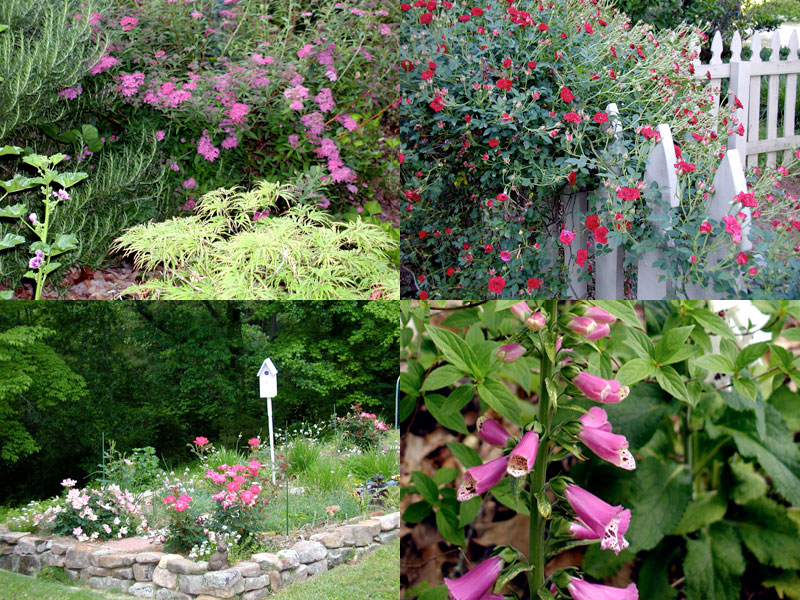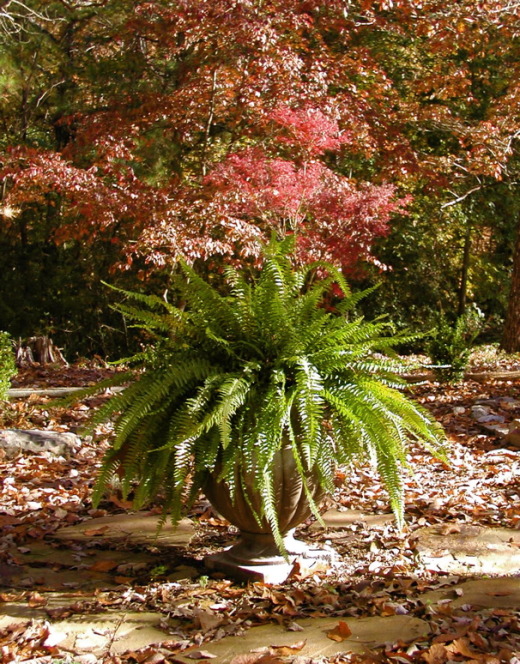Down in the dirt
 Tuesday, December 29, 2009 at 2:35PM
Tuesday, December 29, 2009 at 2:35PM Warning: This post is not for the squeamish, because we are going to get down in the dirt. Excuse me, I mean soil. I'm always having to correct myself.
What's the difference between dirt and soil? You can talk about soil at the dinner table. Soil is refined, and it grows vegetables and pretty flowers.  Good soil promotes healthy growth in my garden. These are spring photos. On the lower left is the herb bed.
Good soil promotes healthy growth in my garden. These are spring photos. On the lower left is the herb bed.
Dirt is what's out in the wilds, and it grows good weeds. It gets under our fingernails and invades our homes. It is plebeian and gross, and kids had better wash it off.
Actually, it's all the same stuff. The difference is our attitude.
Soil (I'll be nice) is about 45 percent minerals or tiny pieces of rock, about 5 percent decayed plant and animal matter, and about 25 percent each of water and air. Sandy soil has the largest particles of rock, and water flows through it easily. The rock bits in clay soil are the smallest. When clay is wet, it is sticky; and when it is dry, it is hard (like concrete). It can contain lots of nutrients, but water has a hard time passing through. My pick ax and I know clay soil well, as that is what's in my yard. Loamy soil has medium size rock particles and is the ideal garden soil. Adding compost will improve the soil structure of all soils.
I talked about compost and soil organisms in my last post, "How I spent my Christmas making mortar". According to Dr. Andrew Moldenke at Oregon State University, "Every time you take a step in an Oregon forest, your foot is being supported on the backs of 16,000 invertebrates held by an average total of 120,000 legs." I imagine something similar is true in an Alabama back yard.
All of these critters spend their lives gobbling up everything in sight, including each other. The food is processed through their systems and then excreted into the surrounding soil. This is an important way organic matter is transformed into minerals that plants can use for nourishment.
Heavy tilling and the use of chemical fertilizers and insecticides disturb the normal underground ecology. Insecticides especially interfere with nitrogen fixation, which is the process by which certain bacteria and fungi transform nitrogen in the air to ammonia, which is a natural fertilizer promoting healthy leaves and good color.
Some lawns are on artificial life support. The chemical lawn company comes in the spring, and the lawn immediately responds with green growth. A couple months later, the grass is looking sickly, so the company returns to spray again. And again. And again. I use a natural fertilizer twice a year, in spring and fall. Green-up takes longer in the spring, but my lawn is thick and healthy throughout the year.This is a summer view of my lawn.
There are many good natural fertilizers, including earthworm compost; seaweed; rabbit, cow, horse, and chicken manure; wood ash and coffee grounds; and composted grass clippings. I also like to use fish emulsion on my herbs and vegetables. It is sad that each year the average family throws away about 1200 pounds of organic matter that could be composted. As gardeners we have a responsibility to care for the earth, for ourselves and for those who come after us, and that includes the world down in the dirt where little worms dwell.
